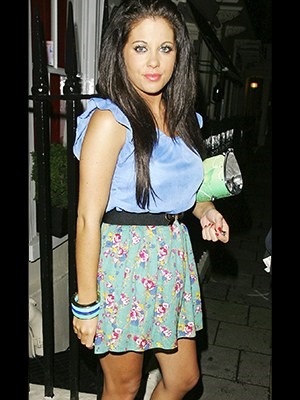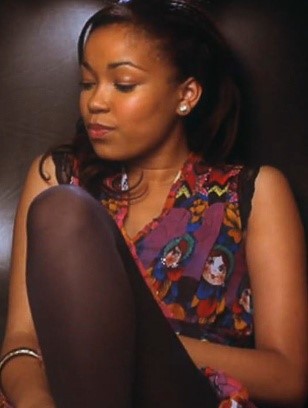Introduction
The fashion market is regarded to be one of the most changing markets in the world, as the tendencies and trends change every season. On the one hand it provides the essential dynamics for the development of this business sector, thus, only companies with high competitive capacity may survive in this sector. On the other hand, the changes of the trends are often unexpected, so, even consumers become taken aback. (Fields, 2006) This paper aims to analyze a consumer’s image of the Yumi fashion company, and analyze the presence of the company on the market of women’s clothes. The questions, which should be regarded are associated with the wishes and requirements of the customers, their preferences, and reasons, why they may resort to the production of the competitors. The issues of the season spring-summer 2011 will be touched upon. Sizing will be analyzed as one of the central issues of the research.
Yumi’s Customers
To begin with, there is strong necessity to emphasize that the fashion market, and the segment of customers, which the company orients at have made Yumi the vibrant company in the sphere of casual fashion. The main range of Yumi’s customers is girls and women aged 16-37. The fact is that this is the age, when women rarely experience troubles with figures, and they are slim enough to show the beauty of their bodies. The main aim of any fashion-oriented company is to produce clothes, which allow women to be original, and which will highlight the merits and conceal the demerits of the figure. As for the range of the sizes, used in the production, it is stated that these are from 10 till 20+. Some collections are produced for sizes 6 and 8, as 10 sizes are often too large for 16 aged customers. The changes to the size distribution of the female population have been very small in 2006. The changes are too small to infer any drastic changes, though it seems like size 12 might now have taken over from size 14 as the biggest share. (Niessen, 2007)
The key reason, why women prefer the production by Yumi is the availability of the brand, simplicity, and originality of the design, and suitability of the clothes for the style and image of the consumers. Originally, these issues are explained by the fact, that clothes by Yumi are regarded to be exclusive enough for the casual wear, thus, ladies prefer the style.
In comparison with the competitors, Yumi’s strong point is the orientation for ladies with large sizes. The design of the clothes allows the performance in several size variants for slim and for large-sized consumers. Thus, consumers appreciate such an approach, filled with care, and thank the company for purchasing its clothes.
The models, which are used for promoting the Yumi clothes are not skinny fashion girls. In spite of the fact that their parameters are far from the commercial standards (90-60-90), they are slender, and confirm the fact that women with broad shoulders (Jordin Sparks, Tyra Banks), large hips (Whitney Thompson), or any other features of the figure may look perfectly. Thus, the main emphasis is made on sizes 10 and larger.
As for the season spring-summer 2011, it should be stated that the catering of the needs and requirements of the consumers will be based upon studies of the previous trends and processes in the market, and study of the tastes of the consumers. Taking into account this consideration, it should be emphasized that the original necessity to cater to the approaching season is to make its own contribution to the development of the trends and tendencies. In the light of this perspective, there is strong necessity to emphasize that the original value of sizing will be regarded in the context of production diversification, as various sizes, for the consumers of various figures. Thus, the customer care policies and principles will be implemented in providing a wider range of sizes, and not only designs and concepts of the designs, used for producing clothes. (White and Griffiths, 2007)
Marketing Positions
The current marketing position of the Yumi Company may be regarded as the position of the self-confident leader, in the sector, in which the company positions its production. Originally, the advertising strategy is created with an important feature, which makes the clothes particularly exclusive: no one wishes to confess that she has nonstandard figure, nevertheless, when women realize that the clothes emphasize the beauties of their figure, and hide the possible demerits, they give preference to this trademark.
The high position in the rates confirms that the clothes by Yumi are worn by numerous celebrities. The fact is that, the sizes and figures of these celebrities are various, nevertheless, they all look very attractive in the clothes by Yumi. All of the photos, shown on the official webpage (Uttam Direct, 2009)
Designs are various, and mainly oriented at ladies who wish to be and feel original, extravagant and courageous, as some of the dresses require real courage to wear. Despite the fact, that the dresses are not tight-fitting, and some are rather loose, it does not mean that they are strict. Most of them are short enough, highlighting legs or shoulders.
AS for the price category, it should be emphasized that the dresses are available enough for the wide range of the audience. The prices range from £40 to £75.
The brand identity is originally closely associated with the product variety, as the consumers are offered the widest range of clothes, dresses, and accessories for satisfying the tastes and needs of the most requiring consumers. The design of the clothes is unique and original, thus, it is difficult not to recognize the Yumi brand, and not to differ it from any other.
3 Main Competitors
Elvi
The company’s target customer is the ABC1 female over-50s customer looking for classic clothing with a design twist. This low margin in what was a very benign retail climate suggests a fundamentally weak proposition. This was probably due to a brand image that was too weak to support sales of the product at quite high prices relative to competitors like M&S. Pricing is pitched at upper-middle market levels, with dresses running from £89 to £170, coats at £89 to £120 and trousers from £35 to £69
Evans
Evans covers sizes 14 to 32, with all major product categories from tops, career wear, dresses, knitwear and coats and jackets to jeans, lingerie, hosiery and bridalwear. Evans is pitched slightly below mid-market, with dresses at £40 to £80, jumpers at £15 to £30, workwear jackets at £25 to £45, and jeans at £14 to £35
Long Tall Sally
Long Tall Sally offers a full lifestyle wardrobe for the taller woman, ranging from jeans and tops to suits, dresses, and skirts, as well as maternity wear, accessories, footwear, swimwear and gym wear.
The product is all under the Long Tall Sally brand.
Pricing is pitched in the mid-market, with dresses from £45 to £75, jeans at £39 to £60 and career wear jackets at £69-95.
As for the matters of affecting the target market, it should be emphasized that these companies are successful enough in their performing in the selected segment, nevertheless, it should be stated that Long Tall Sally has the least effective advertising, as some tall women have inferiority over their height. Thus, part of the consumers is lost for this company.
The overall target market is impacted by these three companies in the context of providing casual wear for the particular groups of the target audience. Originally, it is difficult to satisfy the women audience as a whole, thus, each company gives preference to a particular sector or sector.
Consumer and Ultimately Range Decision for 2011
The enlisted trends are regarded to be the leaders in the market segments they belong two. The fact is that the leaders of the market segments tend to form the tendencies of the further market development, instead of forecasting it. Surely, the essential part of the market is defined by customers and their needs, nevertheless, the companies have particular levers for influencing the market, and creating the design trends, which will be popular during the following seasons. In the light of this perspective, it should be stated that the companies represented in this analysis will be regarded as the founders of the fashion trends in 2011 if they preserve their leading positions. Consequently, the Range Decision for 2011 will be defined jointly by the consumers’ needs, and the attempts by the companies to create the fashion trends, thus, improving the design of the clothes, and providing the other techniques for promoting their product.
As for the sizes, as the key research aspect of the paper, it should be emphasized that the trends, which influence the sizes are beyond the fashion market. On the one hand, the fashion trends make some sizes popular, while the others stay unpopular. Nevertheless, it is the issue of consuming culture in general, thus, the companies will be able only to satisfy the needs of various sizes.
Conclusion
Finally, it should be emphasized that the fashion market and various segments based on the age, height, and size of the consumers are generally regarded as the main aspects of the market development. Originally, there is a strong necessity to satisfy the needs and requirements of the whole audience, nevertheless, the companies are unable to act within such frames, consequently, most fashion clothes companies select particular age and size segments and orient their production for the corresponding audience.
References
Carter, Michael. Fashion Classics from Carlyle to Barthes. Oxford, England: Berg, 2005.
Fields, Jill. “Fashion and Its Social Agendas: Class, Gender, and Identity in Clothing.” Journal of Social History 37.2 (2006): 539.
Niessen, Sandra, Ann Marie Leshkowich, and Carla Jones, eds. Re-Orienting Fashion : The Globalization of Asian Dress /. New York: Berg, 2007.
Uttam Direct. Web.
White, Nicola, and Ian Griffiths, eds. The Fashion Business : Theory, Practice, Image /. Oxford: Berg, 2007.


